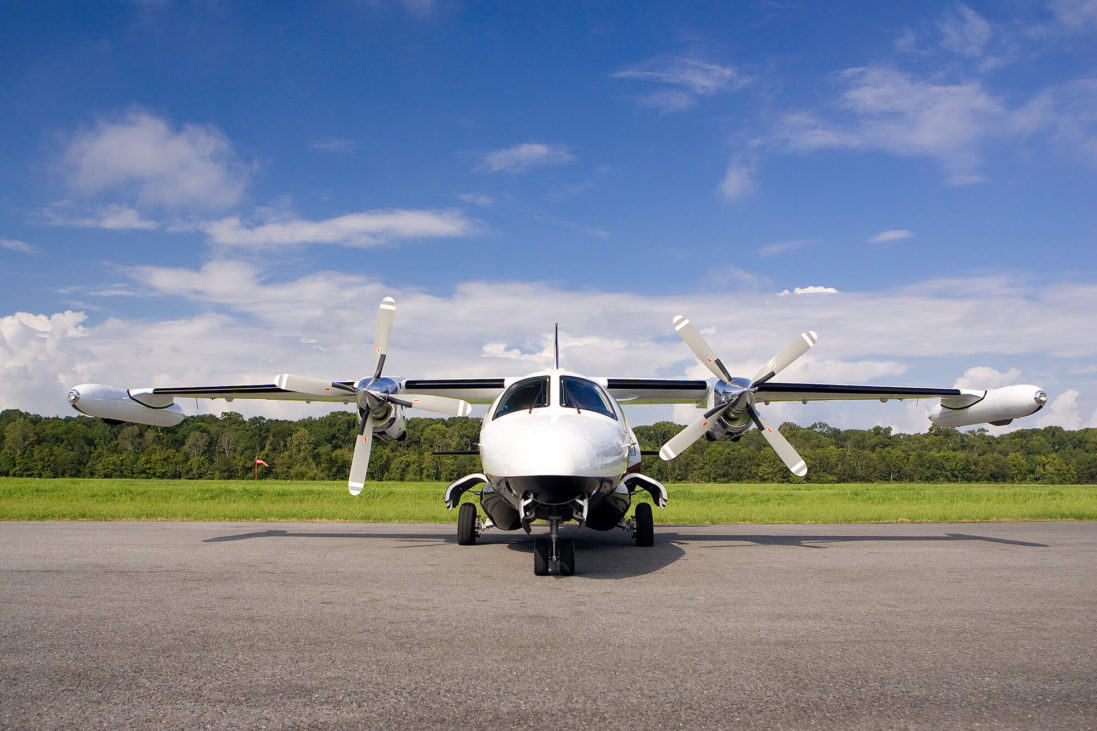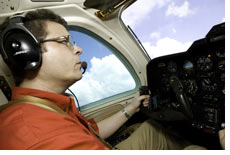
February 1, 2010
The Perfect Fit: An MU-2 is the turboprop of choice for owner/operator Waste Reduction Technologies.

Riley Hagan, owner of Waste Reduction Technologies (WRT), is able to sell his company’s incinerators across the United States from his Baton Rouge base in large part because of his single-pilot aircraft. WRT makes high-tech incinerators that ease the overload on municipal landfills, and the advanced Smokeless Fire™ incinerators reduce new waste by more than 99 percent, greatly extending the life of landfills.
Since most of Waste Reduction Technologies’ customers are located in rural areas or small towns without airline service, the company needs its Mitsubishi MU-2 Marquise turboprop airplane to reach them.
“With my background in aviation, I knew intuitively that an aircraft would help us reach clients and get from Point A to Point B faster than on the airlines,” says Hagan. Previous companies he has owned and worked for used Beech Sierra, Cessna Citation CJ1, Cessna Caravan and Turbo Commander aircraft, but he prefers the MU-2.
Confronting the Challenges
Hagan says that rising to meet the challenges of being the owner and chief pilot are well worth the benefits of owning an MU-2. “[The airplane has] the best value combination I’ve found so far in terms of speed, payload capacity, range, short-field performance and attractive acquisition and maintenance costs,” he says. “For its range and cost to operate, the MU-2 really is the perfect fit for my business. There are hundreds of companies just like mine, where I’m the owner and the flight department.” Hagan estimates that it costs $750 an hour to fly his MU-2, while a jet would cost much more. Piston airplanes may be cheaper to operate, but they cannot fly as fast or as far as the MU-2.
As a pilot and company owner, Hagan is highly motivated to lower operating costs while still using his plane to find new clients and business. For example, WRT uses flight-planning software that files his company’s electronic flight plans, and also helps him determine which missions should be flown in the MU-2 and which should be conducted using airlines.
“We use the most cost-effective method to reach our clients,” Hagan says. “We’ll use the airlines if needed, but if the best option is our own plane, well, that’s why we own it.
“We’ll go usually to meet with a city or county council to make our pitch, and we make site visits to figure out how we can best serve their needs,” explains Hagan. “It’s always best to have these meetings and discussions face-to-face. You can do teleconferences and webinars, but there’s no way for us to understand a job site without being there.”
One recent purchaser of a WRT incinerator was the city of Shenandoah, in far southwestern Iowa. Like many municipalities, Shenandoah had a landfill that was nearly full, with new waste still arriving. The Iowa Department of Natural Resources never approved a high-tech incinerator before and required additional meetings. Des Moines, the closest commercial airport to Shenandoah, is three hours away, but Hagan and his staff were able to fly right into Shenandoah’s local airport.
WRT’s engineering support was critical for getting this approved,” says Bo Harris, Shenandoah’s city administrator. “When they flew in, right here to Shenandoah, we were impressed.”
Training, Safety Top WRT Mission Priorities

While the MU-2 enables WRT to operate efficiently and be responsive to clients, there is a significant amount of training involved with this particular aircraft. The Federal Aviation Administration (FAA) adopted a Special Federal Aviation Regulation in 2008 to increase the required training for MU-2 pilots in response to a series of accidents and incidents.
“The MU-2B turboprop is a complex aircraft that has unique flight characteristics,” says the FAA. “Fully understanding the aircraft’s complexity is much more critical during an emergency situation.” The aircraft’s short wingspan and powerful engines can pose problems for pilots unfamiliar with the design. The FAA’s safety evaluation resulted in a number of recommendations that were supported by MU-2 owners and operators, Mitsubishi and safety groups.
So while each year Hagan must recertify himself on the aircraft to comply with FAA regulations, he says the training is not a difficult challenge to meet, thanks to flight simulators, specialized SFAR instructors and standardized training programs.
“The MU-2 community has embraced the challenges of the plane,” says Hagan. “The recurrent training program keeps us safe in the air, which is good for me as the pilot, and keeps the value of the airplane up, which is good for me as the owner of a business tool.”
Other resources available to MU-2 pilots include a dedicated web site from the airplane’s manufacturer, Mitsubishi, and a peer-developed operator group. Hagan says the latter is “a great way for us pilots to network, learn from each other and improve our own ways of doing business.”
The group meets annually to discuss operations, upgrades and best practices, and to delve into detailed questions and issues that larger associations cannot.


 International Business Aviation Council Ltd.
International Business Aviation Council Ltd.